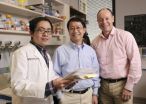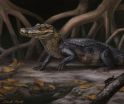(Press-News.org) Lower back pain is a common complaint, and treatment often requires many hours of physical therapy over multiple weekly clinic visits — a costly commitment. Now Dr. Michal Katz-Leurer of Tel Aviv University's Stanley Steyer School of Health Professions at the Sackler Faculty of Medicine says that a simple aerobic walking program is as effective in alleviating lower back pain as muscle strengthening programs that require specialized equipment in rehabilitation clinics. The program includes walking two to three times a week for a period of 20 to 40 minutes,
Dr. Katz-Leurer and her colleague Ilana Shnayderman, a graduate student at the Department of Physical Therapy and a practicing physiotherapist at Maccabi Health Care, say that their treatment option fits easily into a daily routine and allows those with back pain to be more responsible for their own health.
Their study was published in the journal Clinical Rehabilitation.
A simple solution
According to Dr. Katz-Leurer, research has shown that when people walk actively, abdominal and back muscles work in much the same way as when they complete exercises that target these areas. And unlike muscle strengthening programs, which often call for specific equipment and can involve exercises that require expert supervision, walking is a simple activity that can be done alone.
For the study, the researchers recruited 52 patients with lower back pain to participate in a randomized control trial. Through questionnaires, they were initially assessed for pain levels, feelings of disability, and avoidance of daily activities, as well as muscle and walking endurance.
Then, half of the participants completed a typical clinic-based muscle strengthening program, with two to three exercise sessions a week for six weeks. The other half completed a six-week aerobic walking program, walking two to three times weekly. Participants started with 20 minutes of walking, then progressed to 40 minutes as their endurance improved.
Results showed that both groups improved significantly in all areas of assessment, demonstrating that the walking program was "as effective as treatment that could have been received in the clinic," says Dr. Katz-Leurer.
The path to a healthier lifestyle
Dr. Katz-Leurer says that the walking program has the additional advantage of encouraging patients to follow a healthier lifestyle overall. In terms of physical fitness, those in the walking group were able to walk an average of 0.05 miles farther during a six-minute walking test at the end of the program compared to the pre-program assessments.
She also notes that that regularly active people are less likely to suffer typical aches and pains over their lifetime. Walking, a low-impact activity, also lowers blood pressure, boosts brain and immune system functioning, and reduces stress, she says.
###
American Friends of Tel Aviv University (http://www.aftau.org) supports Israel's leading, most comprehensive and most sought-after center of higher learning. Independently ranked 94th among the world's top universities for the impact of its research, TAU's innovations and discoveries are cited more often by the global scientific community than all but 10 other universities.
Internationally recognized for the scope and groundbreaking nature of its research and scholarship, Tel Aviv University consistently produces work with profound implications for the future. END
Walking away from back pain
Home aerobic program as effective as clinical therapy in treating lower back pain, finds Tel Aviv University researcher
2013-03-05
ELSE PRESS RELEASES FROM THIS DATE:
Research leads to better understanding of peripheral neuropathy
2013-03-05
One in 25,000 people worldwide is affected by neurofibromatosis type 2 (NF2), a condition where the loss of a tumour suppressor called Merlin results in multiple tumours in the brain and nervous system.
Sufferers may experience 20 to 30 tumours at any one time and such numbers often lead to hearing loss, disability and eventually death. Those with NF2 may also experience peripheral neuropathy, which is when the nerves carrying messages to and from the brain and spinal column to the rest of the body do not work.
Peripheral neuropathy leads to further complications for ...
Analytical theory may bring improvements to lithium-ion batteries
2013-03-05
WEST LAFAYETTE, Ind. – Researchers have shown theoretically how to control or eliminate the formation of "dendrites" that cause lithium-ion batteries to fail, an advance that if realized would improve safety and might enable the batteries to be charged within a matter of minutes instead of hours.
The dendrites are lithium deposits that form on electrode surfaces and may continue to grow until they cause an internal short circuit, which results in battery failure and possible fire.
Researchers have created an analytical theory that shows how to design experiments to study ...
UT Southwestern scientists make mouse model of human cancer, demonstrate cure
2013-03-05
DALLAS – March 5, 2013 – UT Southwestern Medical Center scientists report the first successful blocking of tumor development in a genetic mouse model of an incurable human cancer.
"To my knowledge, this is the first time that a mouse model of a genetically defined malignant human cancer has been generated in which the formation of the tumor from beginning to end can be monitored and in which blocking the pathway cures the mouse of the tumor," said Dr. Luis Parada, chair of the department of developmental biology at UT Southwestern and senior author of the study published ...
News websites should target 'reward seekers,' MU researcher finds
2013-03-05
COLUMBIA, Mo. -- As newspaper sales continue to decline, many news organizations are searching for ways to improve readership and revenues from their online presences. Now, University of Missouri researchers have found that news organizations should target readers with certain personality traits in order to optimize their online viewership. Paul Bolls, an associate professor of strategic communication at the MU School of Journalism and a 2011-2012 MU Reynolds Journalism Institute Fellow, has found that news consumers who have "reward-seeking" personalities are more likely ...
First single gene mutation shown to result in type 1 diabetes
2013-03-05
New York, NY, March 5, 2013 – A JDRF-funded study out of Switzerland has shown that a single gene called SIRT1 may be involved in the development of type 1 diabetes (T1D) and other autoimmune diseases. The study, "Identification of a SIRT1 Mutation in a Family with Type 1 Diabetes," was published today in Cell Metabolism and represents the first demonstration of a monogenetic defect leading to the onset of T1D.
The research began when Marc Donath, M.D., endocrinologist and researcher at the University Hospital Basel in Switzerland, discovered an interesting pattern of ...
Improper protein digestion in neurons identified as a cause of familial Parkinson's
2013-03-05
NEW YORK, NY (March 5, 2013) — Researchers at Columbia University Medical Center (CUMC), with collaborators at the Albert Einstein College of Medicine of Yeshiva University, have discovered how the most common genetic mutations in familial Parkinson's disease damage brain cells. The mutations block an intracellular system that normally prevents a protein called alpha-synuclein from reaching toxic levels in dopamine-producing neurons. The findings suggest that interventions aimed at enhancing this digestive system, or preventing its disruption, may prove valuable in the ...
New evidence that comets could have seeded life on Earth
2013-03-05
It's among the most ancient of questions: What are the origins of life on Earth?
A new experiment simulating conditions in deep space reveals that the complex building blocks of life could have been created on icy interplanetary dust and then carried to Earth, jump-starting life.
Chemists from the University of California, Berkeley, and the University of Hawaii, Manoa, showed that conditions in space are capable of creating complex dipeptides – linked pairs of amino acids – that are essential building blocks shared by all living things. The discovery opens the door ...
Affordable care alone may not be enough to help Latinos overcome cancer care barriers
2013-03-05
A combination of financial, cultural and communication barriers plays a role in preventing underserved Latino men with prostate cancer from accessing the care and treatment they need, according to a new study by researchers at the UCLA School of Nursing.
The study, "Barriers to Prostate Cancer Care: Affordable Care Is Not Enough," is published in the March issue of the peer-reviewed journal Qualitative Health Research.
According to the American Cancer Society, prostate cancer is the most commonly diagnosed cancer among Latino men. Additionally, Latino men are ...
International consortium discovers 7 new genomic regions associated with AMD
2013-03-05
(Boston) – An international group of researchers has discovered seven new regions of the human genome—called loci—that are associated with increased risk of age-related macular degeneration (AMD), a leading cause of blindness. The AMD Gene Consortium, a network of international investigators representing 18 research groups, also confirmed 12 loci identified in previous studies. The study, which is published online in Nature Genetics and represents the most comprehensive genome-wide analysis of genetic variations associated with AMD, was supported by the National Eye Institute ...
Alligator relatives slipped across ancient seaways
2013-03-05
The uplift of the Isthmus of Panama 2.6 million years ago formed a land-bridge that has long thought to be the crucial step in the interchange of animals between the Americas, including armadillos and giant sloths moving up into North America and relatives of modern horses, rabbits, foxes, pigs, cats, dogs, and elephants down into South America.
However, in the March 2013 issue of the Journal of Vertebrate Paleontology, researchers from the University of Florida and the Smithsonian Tropical Research institute describe fossil crocodilians that shed a surprising new light ...
LAST 30 PRESS RELEASES:
Making lighter work of calculating fluid and heat flow
Normalizing blood sugar can halve heart attack risk
Lowering blood sugar cuts heart attack risk in people with prediabetes
Study links genetic variants to risk of blinding eye disease in premature infants
Non-opioid ‘pain sponge’ therapy halts cartilage degeneration and relieves chronic pain
AI can pick up cultural values by mimicking how kids learn
China’s ecological redlines offer fast track to 30 x 30 global conservation goal
Invisible indoor threats: emerging household contaminants and their growing risks to human health
Adding antibody treatment to chemo boosts outcomes for children with rare cancer
Germline pathogenic variants among women without a history of breast cancer
Tanning beds triple melanoma risk, potentially causing broad DNA damage
Unique bond identified as key to viral infection speed
Indoor tanning makes youthful skin much older on a genetic level
Mouse model sheds new light on the causes and potential solutions to human GI problems linked to muscular dystrophy
The Journal of Nuclear Medicine ahead-of-print tip sheet: December 12, 2025
Smarter tools for peering into the microscopic world
Applications open for funding to conduct research in the Kinsey Institute archives
Global measure underestimates the severity of food insecurity
Child survivors of critical illness are missing out on timely follow up care
Risk-based vs annual breast cancer screening / the WISDOM randomized clinical trial
University of Toronto launches Electric Vehicle Innovation Ontario to accelerate advanced EV technologies and build Canada’s innovation advantage
Early relapse predicts poor outcomes in aggressive blood cancer
American College of Lifestyle Medicine applauds two CMS models aligned with lifestyle medicine practice and reimbursement
Clinical trial finds cannabis use not a barrier to quitting nicotine vaping
Supplemental nutrition assistance program policies and food insecurity
Switching immune cells to “night mode” could limit damage after a heart attack, study suggests
URI-based Global RIghts Project report spotlights continued troubling trends in worldwide inhumane treatment
Neutrophils are less aggressive at night, explaining why nighttime heart attacks cause less damage than daytime events
Menopausal hormone therapy may not pose breast cancer risk for women with BRCA mutations
Mobile health tool may improve quality of life for adolescent and young adult breast cancer survivors
[Press-News.org] Walking away from back painHome aerobic program as effective as clinical therapy in treating lower back pain, finds Tel Aviv University researcher

